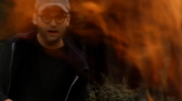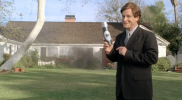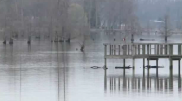Amoco Cadiz: A Brief History
The American owned supertanker, Amoco Cadiz, crashed off of the coast of Brittany, France on March 16, 1978.
Oil poured onto beaches and fishing grounds, creating what was predicted to turn into the worst tanker spill ever recorded.
On March 20, experts raced to salvage 29 million gallons of oil due to a bad weather forecast. Early estimates reported a pollution spread of about 130 kilometers.
Men onboard during the day of the spill said they were up against tremendous seas, rain and hail. At 10:45 a.m. on March 16, the rudder was reported to have stopped responding to the helm. Attempts to regain control with backup steering failed as heavy links began "snapping like cotton."
On March 25, Premier Raymond Barre announced the wreck was caused by "grave negligence," and prohibited tankers from coming within 11 kilometers of the French coast. The master of the tanker, Capt. Pasquale Bardari, was put under investigation and eventually charged with breaking French pollution laws.
Scientists urged for more stringent international rules after having analyzed the impact of the Amoco Cadiz spill. The 230,000 tons of oil that escaped the wreckage left the ecosystems within certain parts of the French Coast dead or severely damaged. Fish, crabs, birds and other sea creatures continued to die at high rates three weeks after the disaster, with plans for a major cleanup yet to be enacted. Studies that covered the impact of the spill predicted very low chances of keeping the oil from blanketing at least 100 miles.
By May, cleanup process remained slow-moving. Six thousand French soldiers continued to clean tar from the beaches and bays two months after the spill. Those in charge grew pessimistic as endless tar balls washed up on beaches; some areas had to be cleaned six times. Thousands of volunteers who came to help were encouraged to leave due to difficulties of organization and lodging.
On July 28, U.S. Scientists said the Amoco Cadiz oil spill spawned the largest biological kill of marine life ever recorded from such an incident.
It is the largest biological kill from any spill we've looked at.
Twenty thousand birds and millions of mollusks, sea urchins, and clams were found dead. Reports also stated that oil remnants had contaminated agricultural crops and entered the human food chain. Additionally, those who helped clean up the shoreline suffered heavy doses of fumes believed to be toxic.
French soldiers were still searching coastlines for oil four months after the Amoco Cadiz spill; some felt the cleanup would never be over. U.S. scientists believed one-third of the oil made it to shore, leaving the rest lost to evaporation and the sea.
Overall, the disaster caused serious financial losses -- one estimate claimed the price of cleanup efforts and business losses exceeded $100 million dollars.
By December, Coast Guard officials said new regulations made U.S. sea lanes safer by increasing and providing better quality inspections. Reports did show a decline in U.S. tanker spills, however, the numbers didn't carry over in the rest of the world. One study reported international tanker losses rose from 204,000 tons in 1976 to 241,000 tons in 1978, which included the spill from supertanker Amoco Cadiz.
In 1989, 11 years after the spill, Amoco still hadn’t paid any money to cover the devastating impacts of the oil spill. France, the fishermen and coastal communities filed lawsuits against Amoco, but Amoco argued they had no obligation to pay because their company was not responsible for the failing steering system. Fingers pointed in all directions; Amoco even fired back by suing the German tugboat that came to Amoco’s aid, France and the Spanish shipbuilders.
In 1992, Amoco finally agreed to pay $200 million in damages.





